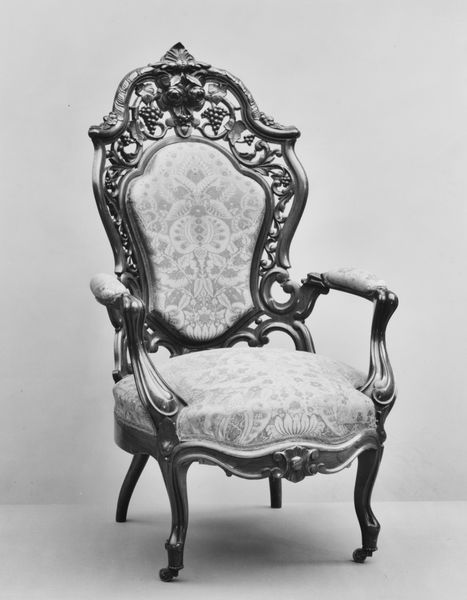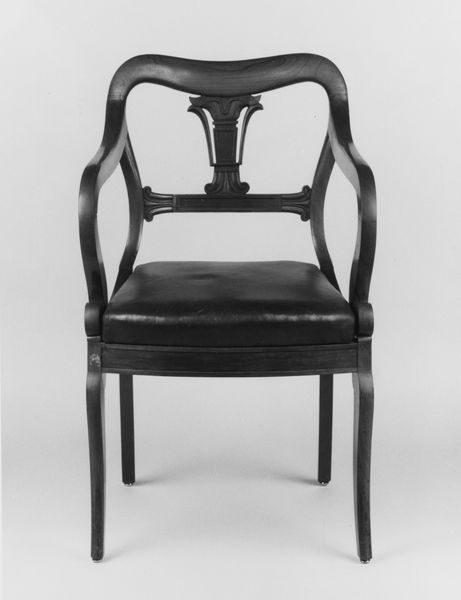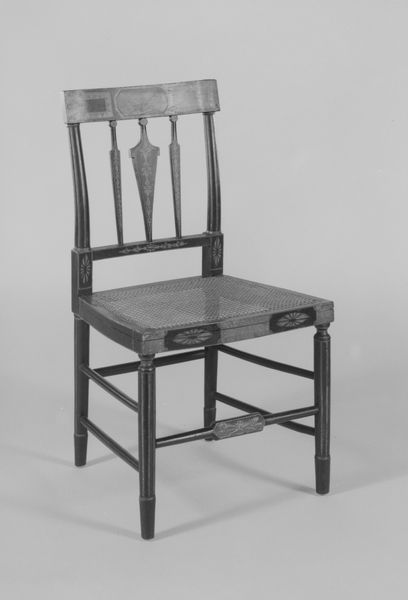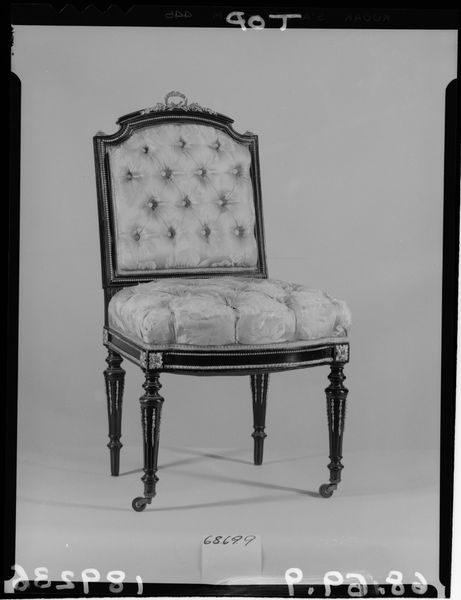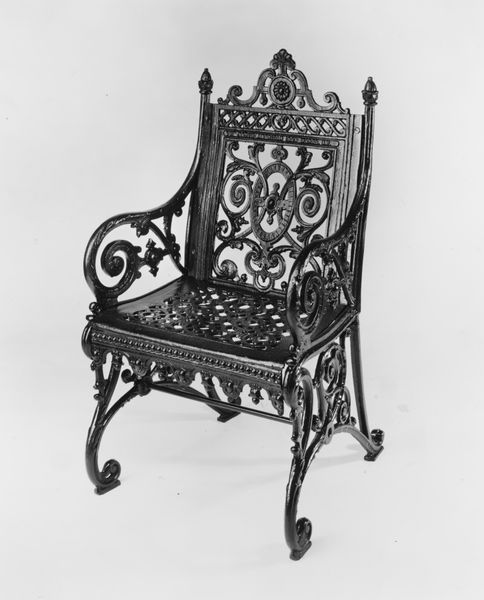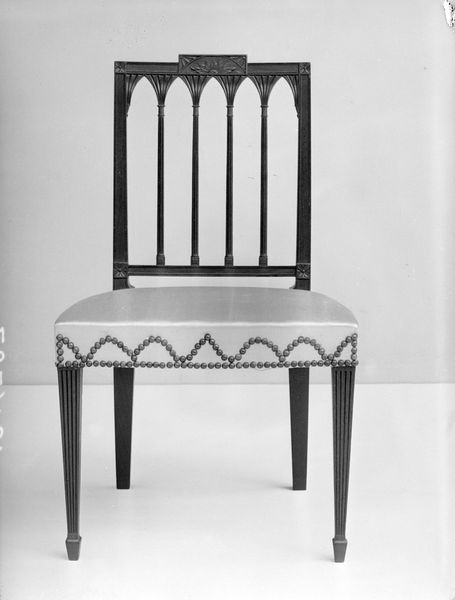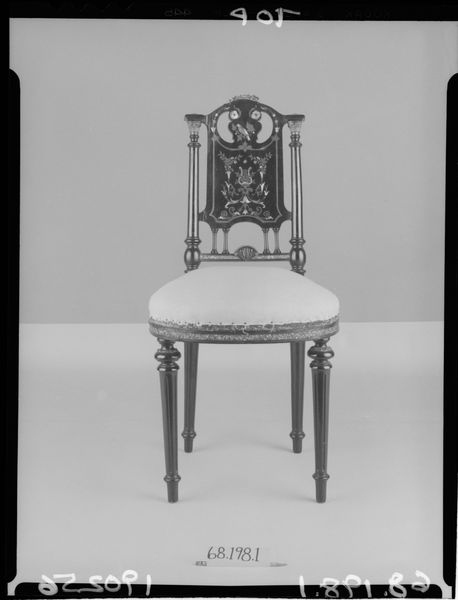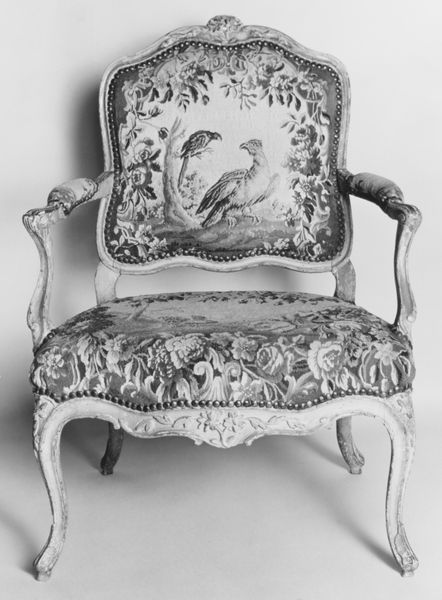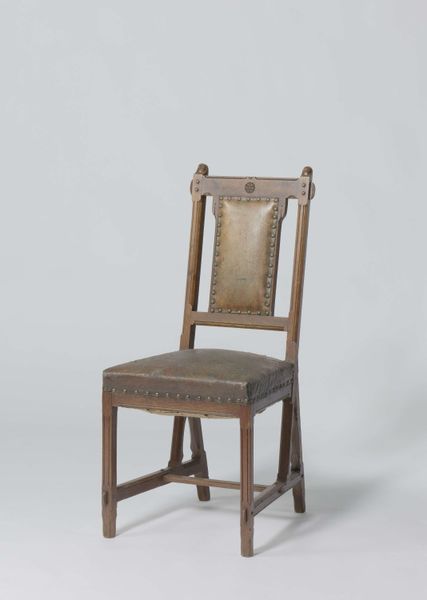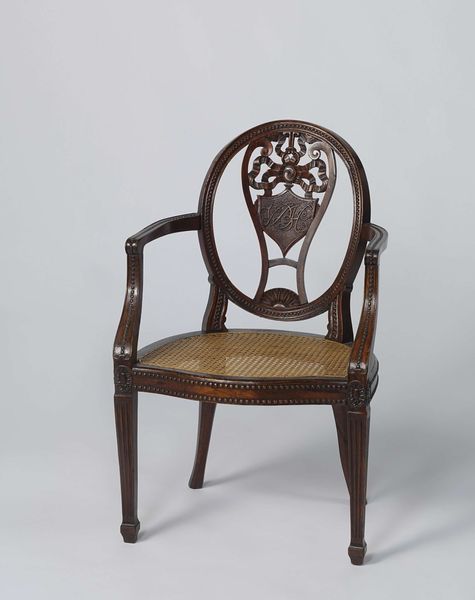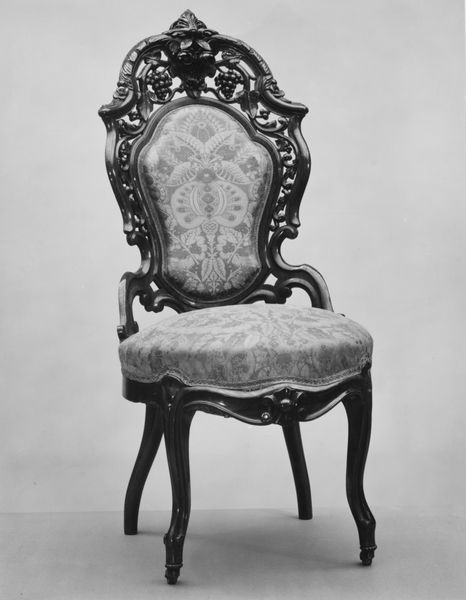
carving, ceramic, sculpture, wood
#
neoclacissism
#
carving
#
sculpture
#
furniture
#
ceramic
#
geometric
#
sculpture
#
ceramic
#
united-states
#
wood
Dimensions: 35 x 18 1/4 x 16 1/2 in. (88.9 x 46.4 x 41.9 cm)
Copyright: Public Domain
Curator: This is the "Side Chair," dating back to 1812-1815, currently housed at the Metropolitan Museum of Art. The craftsman, William Buttre, really embraced the Neoclassical style. Editor: It looks so…stiff. Beautiful, certainly, but also rather uncomfortable. I notice that there are two eagle heads. Curator: Indeed. The chair employs a lot of conventional neoclassical motifs, like the shield back, those eagle heads that form the arm supports, and the subtle deer ornamentation at the top. Consider the historical context: this chair represents the aspirations of the young United States, a desire for order and democracy reflected in its geometric forms. Editor: And a pretty forceful declaration of national identity too with the bald eagles perched where arms should go, asserting dominance and projecting an image of strength. It would feel a little menacing to sit there now! How was it even used, who sat in these types of chairs? Curator: It likely wouldn't have been the primary seating in a parlor, but rather a deliberate display of wealth and education. Think of how architecture and interior design have served to project social messages throughout time. The chair wasn't merely for sitting; it was a statement. A message of classical virtue and American power, and it would certainly have been a message for certain visitors, while making others unwelcome! Editor: It's intriguing to think of it in relation to our contemporary notions of power and privilege. This object highlights the relationship between aesthetics and social hierarchy. Now that it is here, within the walls of the Met, is that power challenged, questioned, subverted, by seeing it within our public space, the museum? Does that impact it now, do you think? Curator: Absolutely. Placing this object, originally designed for private, elite settings, within the public domain allows for new perspectives on its initial social function, prompting reflections on exclusion, luxury and even nationalism itself. Editor: Thinking about how these artifacts can stimulate new discussions, particularly as the politics of art change through time and evolve in people’s mind. Thank you for shedding some light on its background. Curator: My pleasure. These objects invite constant re-evaluation and analysis.
Comments
No comments
Be the first to comment and join the conversation on the ultimate creative platform.
